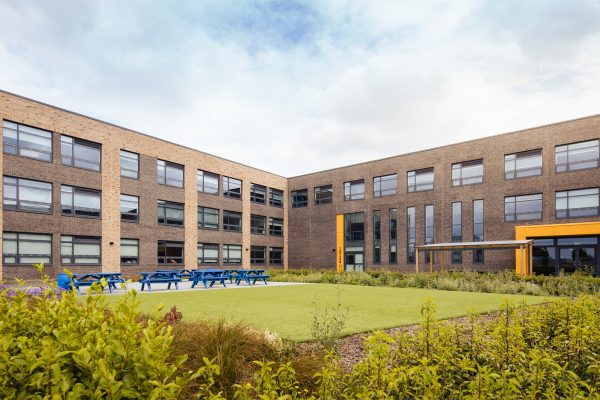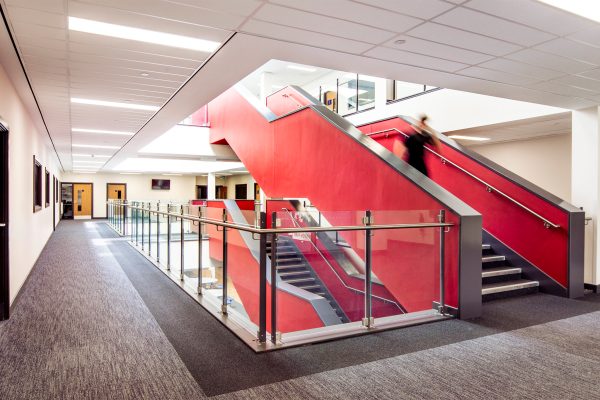
Benton Park School
Transforming Benton Park: A Modern Campus for Future Generations
Benton Park School in Leeds underwent a significant transformation with a £37 million redevelopment, driven by Bond Bryan’s expertise in designing dynamic and sustainable educational environments.
This comprehensive project included new facilities, refurbishments, and landscaped areas, ensuring a future ready, engaging space for over 1,770 students across secondary and sixth form education.




Value
The project created a flexible, modern educational environment designed to support 1,350 secondary students and a sixth form cohort of 420. By retaining and upgrading recent structures like the Sports Hall and Block 7, the scheme maximised value for Leeds City Council by reducing capital expenditure. The new 12,400m² build seamlessly integrates with refurbished elements, providing versatile teaching spaces, a resourceful main hall, dining facilities, and staff areas.
This cohesive design ensures the school can meet current and future educational demands. For the students, staff, and community, the redevelopment delivered a campus that enhances academic excellence and personal growth.
Delivering a 15,000m² modern campus for Benton Park School, balancing new facilities, sustainability, and student wellbeing.


Impact
Benton Park School’s redevelopment positively impacted the local community by providing an inspiring educational space that promotes engagement and wellbeing. Features such as a newly landscaped courtyard offer tranquil areas to enhance student and staff mental health, while modern sports facilities, including an all-weather pitch, support physical activity and community use.
Improved accessibility through a new access road and expanded parking facilities has enhanced functionalities for all users, addressing both immediate and long-term operational needs.

Sustainability
The retention of existing buildings minimised demolition waste, while the new structures prioritised energy efficiency. Soft landscaping, such as courtyard planting, promotes biodiversity and improves air quality.
The overall approach demonstrates a balance between creating a vibrant educational environment and achieving sustainable development goals.
Details
Information
Scope Architectural Design Status Completed Completion Date 2022 Location Leeds Value £37mCollaborators & Partners
Landscape Architect ONE Environments Principal Contractor BAM Construction Structural Engineer BAM Design MEP Engineer BAM Integrated Services Engineering Fire Engineer Omega Fire Engineering Environmental Consultant SLR Consulting Acoustic Consultant SRL Technical ServicesAppendix
1
Get in touch:
Matt, CEO
